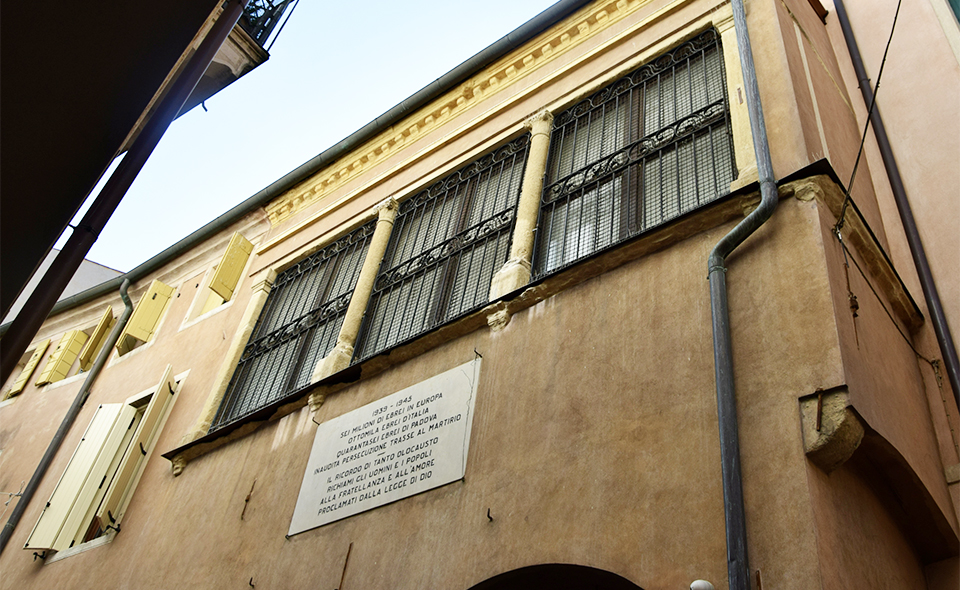
Guided tour of the Museum and Stolpersteine
-
opening hours: SUNDAY from 10:00 AM to 6:00 PM
-
 duration: 1 hour and 30 minutes
duration: 1 hour and 30 minutes
The historic district south of Piazza delle Erbe has always been the nerve center of Jewish life in Padua: among its narrow and winding streets, the multi-century social, cultural, and religious history of the Paduan Jews is told.
Following the measures taken by the Venetians, strict regulations were also introduced in Padua towards the Jewish population. From 1603 to 1797, four gates were placed to separate the Jewish quarter from the rest of the city, at the ends of the streets that crossed the area designated as the ghetto: two on the current Via San Martino and Solferino, one on Via delle Piazze, and one on Via dell'Arco. Within these limits, the synagogues of the city found their space, and small traces of the Jewish past linked to this place still remain.
In this neighborhood, numerous Stolpersteine (Stumbling Stones) can also be found, joining the work of the artist Gunter Demnig to commemorate the victims of Nazi-Fascism. Usually placed in front of the last residence of the victim, they bear the victim's name, year of birth, date of arrest, place of deportation, and, if known, the date and place of death. These small forms of memory, however, conceal the stories of the remembered individuals, which intertwine with each other and remain to be told.
Additional Note: More information about the Stolpersteine placed in Padua can be found and updated on the website http://www.lepietredinciampoapadova.it/.





Ticketing details: The visit to the Museum of Jewish Padua includes an in-depth exploration of the history of the Padua ghetto.
Upon request, a focus dedicated to the Stolpersteine and the stories of the people they commemorate is also available.
Choose the formula that best suits your needs and curiosity!




For reservations or information, fill out the form and we will be happy to respond
For reservations or information, fill out the form and we will be happy to respond